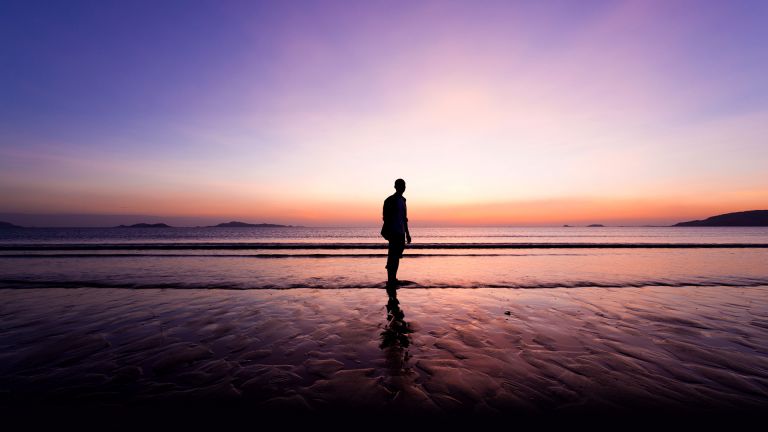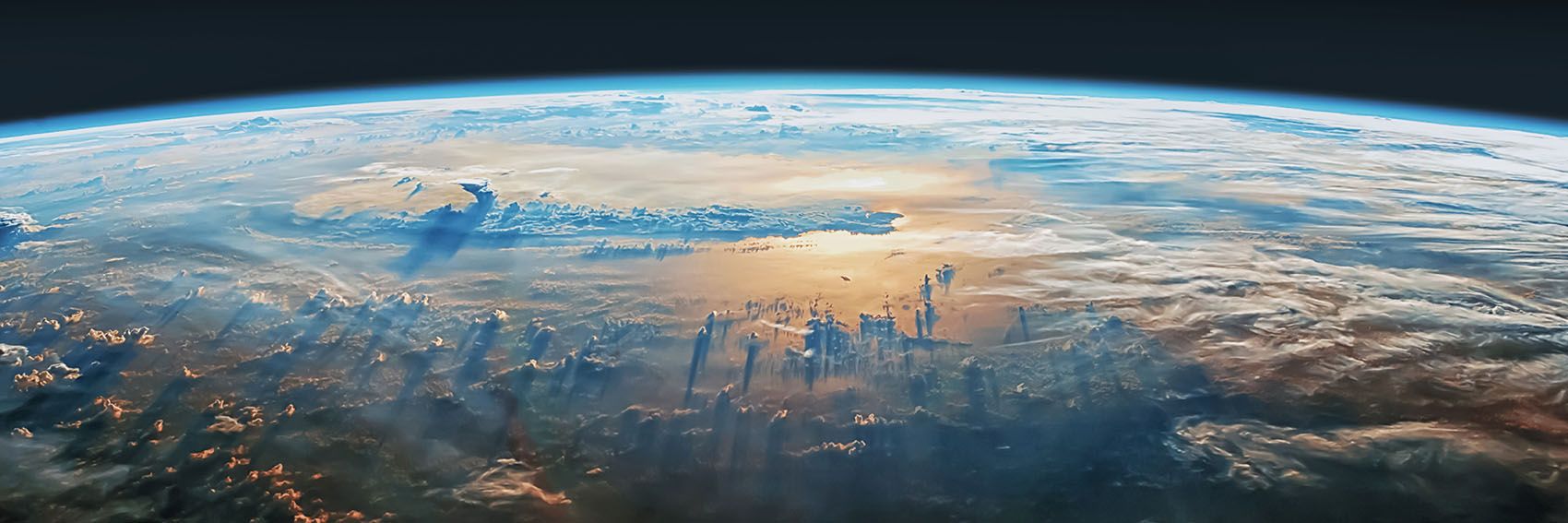
Inspired magazine
Featuring incredible insights and experiences of inspirational people from around the world, we explore some of the ultra-high net worth interests and passions that are thrilling and fascinating in equal measure.

21 August 2024
Please note: Barclays Private Bank does not endorse any of the companies or individuals referenced in this article.
The final frontier is finally opening up. How soon could new space tourism companies – previously the reserve of thrill-seeking billionaires – promise to offer something for almost everyone?
It’s been a long wait for space tourism to take off, and despite teething problems, trips into orbit may soon become more accessible.
From 10-day stays on the space station for those ready to pay upwards of $55 million1, through to suborbital roller coaster jaunts for about $450,000 to more luxurious flights on stratospheric balloons for about $150,0002 – the space tourism sector has the potential to cater to anyone desiring an otherworldly experience. That is, anyone who can afford it.
We are not quite there yet, but analysts see a bright future as demand has been steady despite setbacks. Supersonic climbs, freedom from the confines of gravity and magnificent views of the planet from above are so alluring that companies such as Virgin Galactic have accumulated waiting lists of hundreds of wannabe spacefarers.
By the end of this decade, space tourism flights may be taking off multiple times per week, and tickets might settle at more affordable levels, allowing many more adventurers to enjoy something that has so far been prohibitively expensive.
The world first caught space fever two decades ago when SpaceShipOne, an experimental three-person space plane was developed by aerospace engineer Burt Rutan, winner of the Ansari X Prize. The star-covered vehicle blasted off towards the edge of space from below the White Knight carrier plane above California’s Mojave Desert on 21 June 2004. It became the first crewed, privately built vehicle to cross the Kármán line, the theoretical boundary between Earth’s atmosphere and outer space at an altitude of 100 kilometres (km).
Virgin Galactic soon stepped in, contracting Rutan’s company Scaled Composites to develop a larger vehicle to provide the experience to paying customers. That bigger spaceplane, SpaceShipTwo, first rolled out of its hangar in 2009 amid promises it would be taking paid trips to space in three years’ time. The wait, indeed, was much longer, marred by a crash in 2015 that killed one pilot and seriously injured the other.
But in July 2021, Virgin Galactic was ready to prove naysayers wrong, sending SpaceShipTwo for its first fully crewed adventure. The flight didn’t go as well as Virgin Galactic had hoped, resulting in a grounding by the U.S. Federal Aviation Administration3 after SpaceShipTwo veered off its permitted path.
Hot on Virgin Galactic’s heels was Blue Origin, whose New Shepard rocket blasted off the company’s spaceport in Texas only nine days after Virgin’s ill-fated flight. Since then, the two companies have sent more than 50 people to space between them.
Virgin Galactic offers tickets for $450,0004. It is not known how much Blue Origin charges, but a seat on the company’s first crewed trip in 2021 sold for $28 million5 in an online auction. Right now, flight opportunities are limited, and it’s not clear who gets priority.
Although Blue Origin and Virgin Galactic’s suborbital vehicles are quite different, they both offer short spells of weightlessness, estimated to last seven minutes. To put the brevity into context, the ride on Blue Origin’s pilotless New Shepard6 lasts just 11 minutes.
When the rocket shoots upwards, passengers get pinned into their seats with three times the force of Earth’s gravity. The squeeze lasts about two-and-a-half minutes, reaching three times the speed of sound.
When the engine cuts out, the capsule enters free fall, although technically still climbing for another one-and-a half minutes. In that moment, the weight dissolves and hyper gravity changes into weightlessness.
Behind the capsule’s large windows, the curvature of the Earth shrouded in the misty atmosphere retreats. With the thickest layer of the atmosphere left behind, the sky turns black, revealing its star-studded beauty. Passengers can then unbuckle from their seats and explore different perspectives from each of New Shepard’s windows, which are the largest-ever in space7.
The capsule reaches its peak about 100km above the planet and begins its seven-minute descent. The weightless reverie comes to a halt when the deployment of the parachute stops the freefall some 2km above Earth’s surface. The passengers, by this time strapped back in their seats, briefly experience a pressure equal to five times Earth’s gravity.
The trip with Virgin Galactic is a longer affair, involving a take-off of the twin-fuselage White Knight Two carrier plane that drops off SpaceShipTwo with its passengers at an altitude of 15.5km. From there, SpaceShipTwo soars skyward, having already bypassed the densest layer of Earth’s atmosphere.
Similar to the experience of Blue Shepard passengers, space tourists inside Virgin Galactic’s plane experience about three times the force of Earth’s gravity during the rocket-powered climb, followed by seven minutes of weightless floating.
Instead of using parachutes, SpaceShipTwo’s pilots manoeuvre the plane out of free fall by deploying a breaking tail some 16km above the Earth. The plane then glides back to the spaceport like any normal aircraft.
Virgin Galactic is currently working on its next-generation Delta spaceplane that will be able to fly six passengers and take off for its out-of-this-world excursions twice a week. If all goes well, Delta will pass its test flights in 2025 and commence commercial operations in 2026, allowing Virgin Galactic to finally attend to its growing waiting list.
Less is known about Blue Origin’s plans as the company also has stakes in the more ambitious orbital and lunar travel market, planning to launch its own space station, the Orbital Reef, by the end of this decade.
Unfortunately for some, rocket flight may not be for everyone. Although people as old as 90 have taken part in sub-orbital flights, many medical conditions prohibit participation. An alternative for comfort lovers may soon become available, which anyone fit enough to fly on a commercial jet could be able to enjoy.
US-based Space Perspective and Spain-headquartered HALO Space are building pressurised capsules that could rise to the stratosphere, the second lowest layer of Earth’s atmosphere, attached to helium-filled balloons.
Such a voyage involves a minor jerk at lift-off as the balloon pulls the capsule off the ground at 12 miles per hour. Rather than an adrenaline-filled roller coaster, the balloon would offer a six-hour meditative cruise complete with fine dining and champagne.
For those with the deepest pockets and an insatiable appetite for adventure, options are also set to expand. The Inspiration4 mission saw four civilians orbit Earth for three days in SpaceX’s Dragon Crew capsule in September 2021. Commander and sponsor, entrepreneur Jared Isaacman, has since announced plans to fly a further three private missions as part of the Polaris Dawn project. Isaacman’s and SpaceX’s daring mission involves venturing nearly four times farther than the International Space Station.
Opportunities for private visits to the International Space Station are also expanding as U.S.-based Axiom offers 10-day trips for $55 million8 a seat.
In the future, the price of these trips might drop if plans to build private space stations by companies including Axiom, Blue Origin and Airbus come to fruition at the end of this decade.
More and more of us, it seems, could soon have the opportunity to go where very few have gone before.

Featuring incredible insights and experiences of inspirational people from around the world, we explore some of the ultra-high net worth interests and passions that are thrilling and fascinating in equal measure.
This communication is general in nature and provided for information/educational purposes only. It does not take into account any specific investment objectives, the financial situation or particular needs of any particular person. It not intended for distribution, publication, or use in any jurisdiction where such distribution, publication, or use would be unlawful, nor is it aimed at any person or entity to whom it would be unlawful for them to access.
This communication has been prepared by Barclays Private Bank (Barclays) and references to Barclays includes any entity within the Barclays group of companies.
This communication:
(i) is not research nor a product of the Barclays Research department. Any views expressed in these materials may differ from those of the Barclays Research department. All opinions and estimates are given as of the date of the materials and are subject to change. Barclays is not obliged to inform recipients of these materials of any change to such opinions or estimates;
(ii) is not an offer, an invitation or a recommendation to enter into any product or service and does not constitute a solicitation to buy or sell securities, investment advice or a personal recommendation;
(iii) is confidential and no part may be reproduced, distributed or transmitted without the prior written permission of Barclays; and
(iv) has not been reviewed or approved by any regulatory authority.
Any past or simulated past performance including back-testing, modelling or scenario analysis, or future projections contained in this communication is no indication as to future performance. No representation is made as to the accuracy of the assumptions made in this communication, or completeness of, any modelling, scenario analysis or back-testing. The value of any investment may also fluctuate as a result of market changes.
Where information in this communication has been obtained from third party sources, we believe those sources to be reliable but we do not guarantee the information’s accuracy and you should note that it may be incomplete or condensed.
Neither Barclays nor any of its directors, officers, employees, representatives or agents, accepts any liability whatsoever for any direct, indirect or consequential losses (in contract, tort or otherwise) arising from the use of this communication or its contents or reliance on the information contained herein, except to the extent this would be prohibited by law or regulation.
Axiomspace.com, ‘Want to take a 10-day trip to the space station? It will cost you USD55 million’, 14 June 2018 Return to reference
Virgin Galactic website, ‘Virgin Galactic launches spaceflight reserves and new consumer brand’, 15 February 2022 Return to reference
Ars Technica, ‘The FAA The FAA grounds Virgin Galactic’s spaceship after flight deviation’, 9 February 2021Return to reference
Virgin Galactic website, ‘Virgin Galactic launches spaceflight reserves and new consumer brand’, 15 February 2022 Return to reference
Blue Origin website, ‘The very first seat on New Shephard sells for USD28 million’, 12 June 2021Return to reference
Blue Origin website, ‘New Shepard is ushering in new generations of astronauts’, 20 May 2024Return to reference
Blue Origin website, ‘New Shepard is ushering in new generations of astronauts’, 20 May 2024Return to reference
Axiom Space, ‘Want to take a 10-day trip to the space station? It’ll cost you USD55 million’, 14 June 2018Return to reference